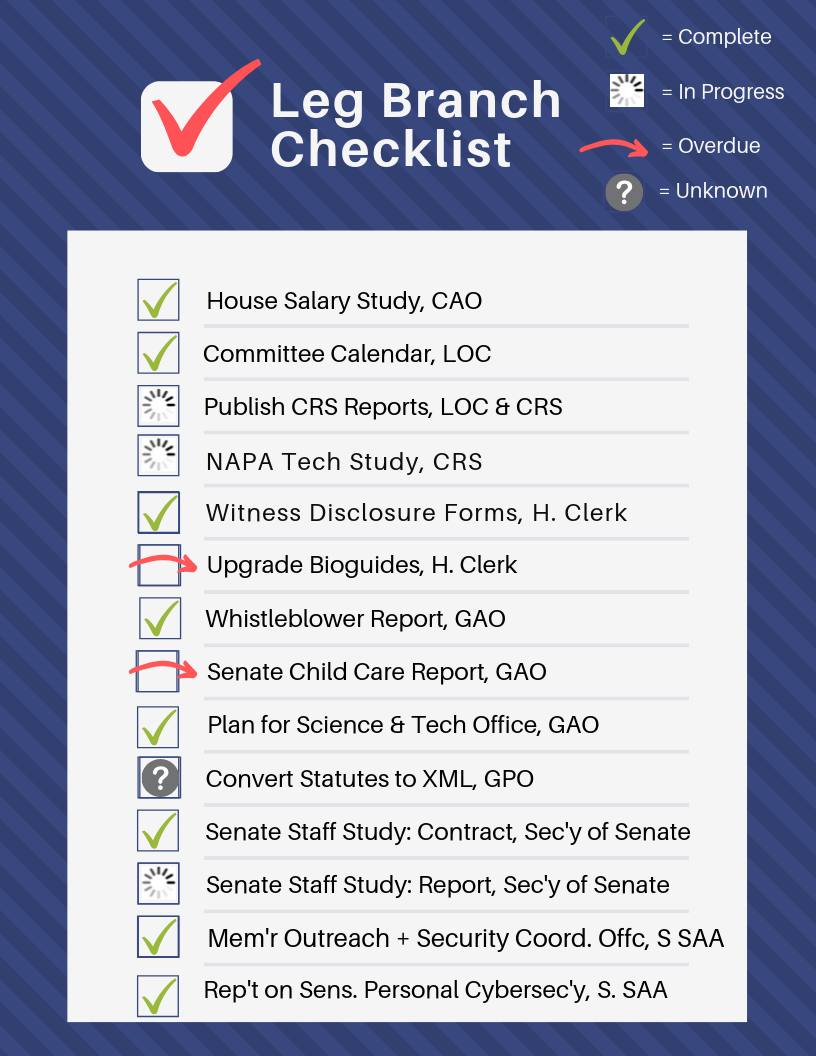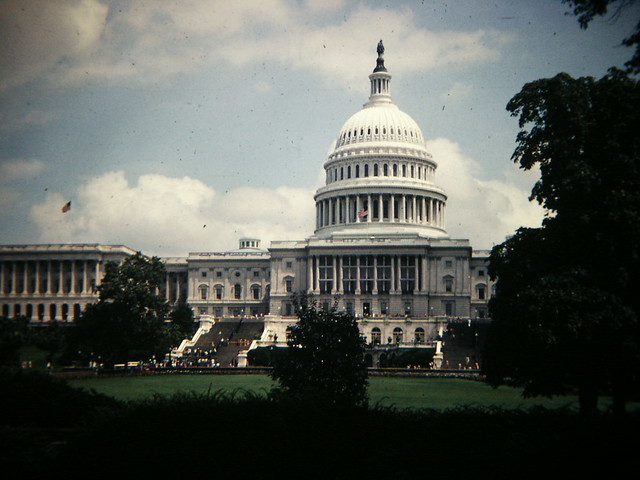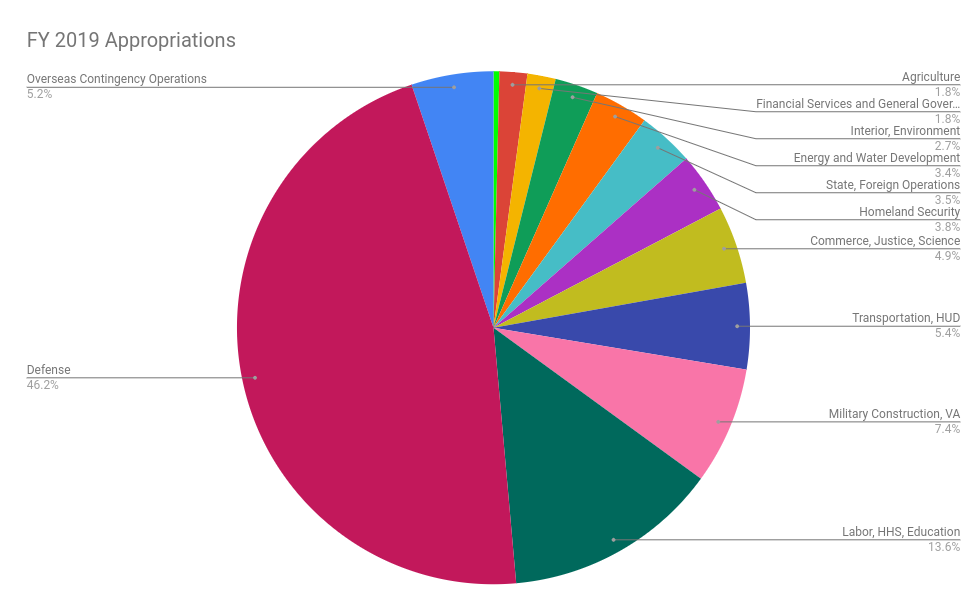CRS issued an updated report on OTA on April 29, 2020, that “describes the OTA’s historical mission, organizational structure, funding, staffing, operations, and perceived strengths and weakness. The report concludes with a discussion of issues and options surrounding reestablishing the agency or its functions.”
Continue reading “CRS Report: “The Office of Technology Assessment: History, Authorities, Issues, and Options””Tag: Science & Tech
Coronavirus Relief: Science and Tech Capacity in Congress
Congress, heal thyself.
Congressional capacity (or lack thereof) to respond to a global pandemic is on full display. Members in the House and Senate have tested positive, as have staff. Republicans in the Senate briefly held their majority by one (48-47 with 5 Republican Senators in quarantine).
Members are limited to in-person deliberation and voting at a time of social distancing and self-quarantining. Congress has historically underfunded its own operations, as well as science and technology assessment. Federal contracting rules and government systems make it difficult to buy and use commercial, off-the-shelf systems the rest of us take for granted.
Congressional capacity is “the human and physical infrastructure Congress needs to resolve public problems through legislating, budgeting, holding hearings, and conducting oversight.” As Congress funds millions of individuals and businesses, as well as state and local governments across the country with Trillions of dollars, it must fund its own capacity to respond to this crisis.
Continue reading “Coronavirus Relief: Science and Tech Capacity in Congress”Save the Date: Harvard Ash Center Briefing on Science, Technology, and Democracy Friday February 21st.
The Ash Center is hosting a congressional lunch briefing to offer recommendations and present road map for resurrecting a technology assessment capability in Congress with Zach Graves and Daniel Schuman, authors of “Science, Technology, and Democracy: Building a Modern Congressional Technology Assessment Office”.
The briefing will take place on Friday February 21 from 12:00 to 1:30 pm in the Rayburn House Office Building, Room 2044.
Continue reading “Save the Date: Harvard Ash Center Briefing on Science, Technology, and Democracy Friday February 21st.”Presenting a New One-Stop-Shop for all Science and Technology Related Reports: @Global_OTA.
In today’s clickbaity and information saturated digital age, it can be difficult to find definitive and objective information, research, and reports on science and technology and their impacts on global policy making. Luckily, our team just made many of these reports easier to find. @Global_OTA, our newest twitter bot, tweets all science & technology assessment reports that are published from European Parliamentary Technology Assessment (EPTA).
Continue reading “Presenting a New One-Stop-Shop for all Science and Technology Related Reports: @Global_OTA.”The Leg Branch Approps To-Do List for FY 2019
Congress requested a number of improvements to how the legislative branch functions as part of the Legislative Branch Appropriations Act for Fiscal Year 2019 (and, in one instance, for FY 2018). What happened?
We reviewed the status of requested leg branch projects in the following chart and then provided an issue-by-issue analysis. We expect to have more status updates at this week’s upcoming Legislative Data and Transparency Conference.
 Continue reading “The Leg Branch Approps To-Do List for FY 2019”
Continue reading “The Leg Branch Approps To-Do List for FY 2019”
A modernized OTA is a key step in addressing Congress’s S&T capacity gap
by Daniel Schuman and Zach Graves
Last week, bipartisan bicameral legislation was introduced by Reps. Mark Takano (D-CA) and Bill Foster (D-IL), and Sens. Maizie Hirono (D-HI) and Thom Tillis (R-NC), aimed at strengthening Congress’s ability to understand science and technology policy issues. (H.R. 4426, S. 2509) We welcome these developments and are encouraged to see ongoing bipartisan support for enhancing Congress’s science and technology capacity and expertise. Continue reading “A modernized OTA is a key step in addressing Congress’s S&T capacity gap”
How Should the New OTA Decide What To Study?
The likelihood of Congress reinstating a science and technology assessment office is at an all time high, but should such an agency be reconstituted, how should it decide what issues to address?

Congress’s other legislative support agencies — the Government Accountability Office, the Congressional Research Service, and the Congressional Budget Office — use various mechanisms to decide where to devote analytic resources. The GAO, for example, prioritizes congressional mandates, then senior leader and committee requests, and then individual member requests, with the practical effect that individual member requests are not usually considered. CRS, by contrast, leaves significant discretion to its analysts concerning which general distribution reports to create, although it does look at frequent requests from members of Congress. (CRS memos, of course, are written at the request of individual members.) Continue reading “How Should the New OTA Decide What To Study?”
The Crystal Ball on Funding for the Office of Technology Assessment
Earlier this year, the House’s Appropriations Committee favorably reported a Legislative Branch Appropriations bill for FY 2020 that contained $6m in start-up funds for the Office of Technology Assessment spread out over two years. Now that the House and Senate have agreed upon top line spending numbers for the federal government, where does all this stand?
As you might recall, the House of Representatives passed 10 out of 12 appropriations bills, but the Legislative Branch bill was not among them. It got hung up on the House floor over an unrelated fight over providing members of Congress with a cost of living increase. Continue reading “The Crystal Ball on Funding for the Office of Technology Assessment”
The Congress’s Edifice Problem
According to the Architect of the Capitol, it will take several billion dollars to keep the Congress from literally falling apart. This, and much more, was the subject of four legislative branch appropriations hearings this past week.
It’s not just the physical infrastructure of Congress that’s eroding, the power of the institution has taken a hit over the years with budget cuts. The result has been executive branch overreach as well as cyber security and IT practices falling miles behind best practices.
The legislative branch appropriations subcommittee in charge of doling out the funds that keep the branch functioning has the smallest pot of money to work with in the federal government: last year its funding was only approximately $4.3 billion, with overall federal spending about 1000x greater at $4.3 trillion.
To put this in context, $1.244 trillion was allocated to the 12 appropriations committees for FY 2019. The amount for the legislative branch is so small you can’t see it on the chart — it’s the bright green sliver. Here’s the amounts from least to greatest: Legislative Branch ($4.8b), Agriculture ($23b), Financial Services ($23b), Interior & Environment ($35.6b), Energy & Water ($44.6b), State & Foreign Ops ($46.2b), Homeland Security ($49.4b), Commerce & Science & Justice ($64.1b), Transportation & HUD ($71.1b), Military Construction & VA ($97.1b), Labor & HHS & Education ($178.1b), Defense ($606.5b). (There’s an additional $77b for “Overseas Contingent Operations,” of which $67.9b went to Defense.)
What’s in the Senate Appropriations Committee’s 2019 Leg Branch Approps Bill
On Thursday, the Senate Appropriations Committee unanimously adopted the Legislative Branch Appropriations bill for 2019 (committee bill text, committee report), advancing the measure to the full chamber. The legislation contains provisions concerning the Senate’s ability to do its job, mirroring in some instances provisions contained in the House bill, which was passed by that chamber last week. (As is common practice for Senate legislative branch appropriations, there was no public subcommittee markup and the full committee markup was recorded as audio only — listen to the last 8 minutes here).
Among the highlights of what was included in the bill text or committee report: Continue reading “What’s in the Senate Appropriations Committee’s 2019 Leg Branch Approps Bill”
